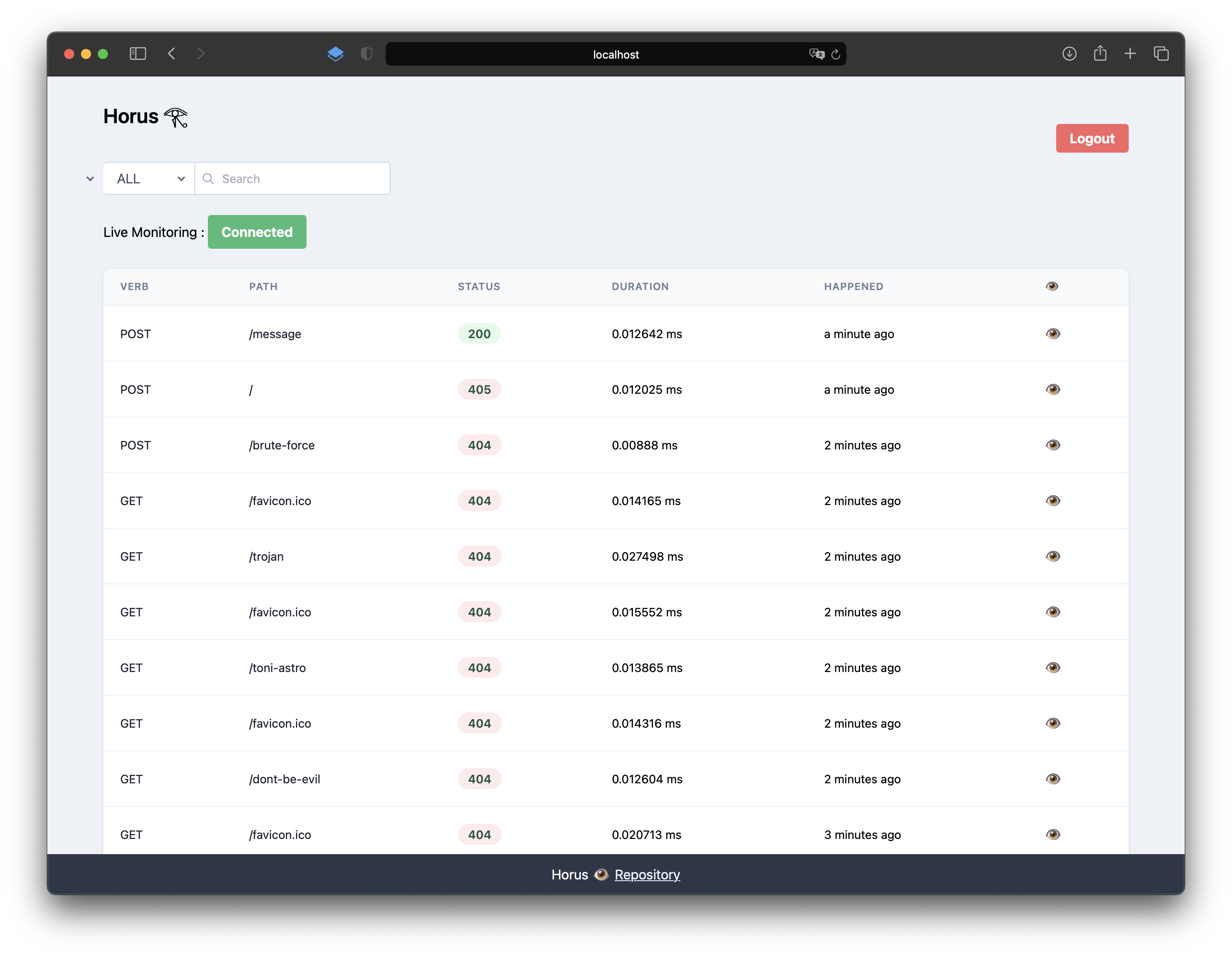Epazote
🌿
Automated HTTP (microservices) supervisor
Epazote automatically update/add services specified in a file call epazote.yml. Periodically checks the defined endpoints and execute recovery commands in case services responses are not behaving like expected helping with this to automate actions in order to keep services/applications up and running.
In Continuous Integration/Deployment environments the file epazote.yml can dynamically be updated/change without need to restart the supervisor, avoiding with this an extra dependency on the deployment flow which could imply to restart the supervisor, in this case Epazote.
How it works
In its basic way of operation, Epazote periodically checks the services endpoints "URLs" by doing an HTTP GET Request, based on the response Status code, Headers or either the body, it executes a command.
In most scenarios, is desired to apply a command directly to the application in cause, like a signal (kill -HUP), or either a restart (sv restart app), therefore in this case Epazote and the application should be running on the same server.
Epazote can also work in a standalone mode by only monitoring and sending alerts if desired.
How to use it
First you need to install Epazote, either you can compile it from source or download a pre-compiled binary matching your operating system from here: https://dl.bintray.com/nbari/epazote/
To compile from source, after downloading the sources use
maketo build the binary
Epazote was designed with simplicity in mind, as an easy tool for DevOps and as a complement to infrastructure orchestration tools like Ansible and SaltStack, because of this YAML is used for the configuration files, avoiding with this, the learn of a new language or syntax and simplifying the setup.
Basic example
services:
google:
url: https://www.google.com
seconds: 5
expect:
status: 302
ssl:
hours: 72
if_not:
cmd: echo -n "google down"
To supervise google you would run (basic.yml is a file containing the above code):
$ epazote -f /path/to/yaml/file/basic.yml -d
-d is for debugging, will print all output to standard output.
This basic setup will supervise every 5 seconds the service with name google, it will do an HTTP GET to http://www.google.com and will expect an 302 Status code if not, it will echo -n "google down"
The ssl: hours: 72 means to send an alert if the certificate is about to expire in the next 72 hours.
Extending the basic example for receiving notifications:
config:
smtp:
username: [email protected]
password: password
server: mail.example.com
port: 587
headers:
from: [email protected]
to: [email protected]
subject: "[name - exit- status]"
services:
google:
url: http://www.google.com
minutes: 3
expect:
status: 200
if_not:
cmd: echo -n "google down"
notify: yes
In this case, every 3 minutes the service will be checked and in case of not receiving a 200 Status code, besides executing the command: echo -n "google down" an email is going to be send to [email protected], this because of the notify: yes setting.
The configuration file
The configuration file (YAML formated) consists of two parts, a config and a services (Key-value pairs).
The config section
The config section is composed of:
- smtp (Email settings for sending notification)
- scan (Paths used to find the file 'epazote.yml')
Example:
config:
smtp:
username: [email protected]
password: password
server: mail.example.com
port: 587
headers:
from: [email protected]
to: [email protected] [email protected] [email protected]
subject: "[_name_, _because_]"
scan:
paths:
- /arena/home/sites
- /home/apps
minutes: 5
config - smtp
Required to properly send alerts via email, all fields are required, the headers section can be extended with any desired key-pair values.
config - smtp - subject
The subject can be formed by using this keywords: _because_ _exit_ _name_ _output_ _status_ _url_ on the previous example, subject: [_name_, _status_] would transform to [my service - 500] the name has replaced by the service name, my service and status by the response status code 500 in this case.
config - scan
Paths to scan every N seconds, minutes or hours, a search for services specified in a file call epazote.yml is made.
The scan setting is optional however is very useful when doing Continues Deployments. for example if your code is automatically uploaded to the directory /arena/home/sites/application_1 and your scan paths contain /arena/home/sites, you could simple upload on your application directory a file named epazote.yml with the service rules, thus achieving the deployment of your application and the supervising at the same time.
config (optional)
As you may notice the config section contains mainly settings for sending alerts/notifications apart from the scan setting, therefore is totally optional, meaning that Epazote can still run and check your services without the need of the config section.
If you want to automatically update/load services you will need the config - scan setting.
The services section
Services are the main functionality of Epazote, is where the URL's and the rules based on the response are defined, since options vary from service to service, an example could help better to understand the setup:
services:
my service 1:
url: http://myservice.domain.tld/_healthcheck_
timeout: 5
seconds: 60
log: http://monitor.domain.tld
expect:
status: 200
header:
content-type: application/json
body: find this string on my site
if_not:
cmd: sv restart /services/my_service_1
notify: [email protected]
msg: |
line 1 bla bla
line 2
if_status:
500:
cmd: reboot
404:
cmd: sv restart /services/cache
msg: restarting cache
notify: [email protected] [email protected]
if_header:
x-amqp-kapputt:
cmd: restart abc
notify: [email protected]
msg: |
The rabbit is angry
& hungry
x-db-kapputt:
cmd: svc restart /services/db
other service:
url: https://self-signed.ssl.tld/ping
header:
Origin: http://localhost
Accept-Encoding: gzip
insecure: true
minutes: 3
redirect service:
url: http://test.domain.tld/
follow: yes
hour: 1
expect:
status: 302
if_not:
cmd: service restart abc
notify: yes
emoji: 1F600-1F621
salt-master:
test: pgrep -f salt
if_not:
cmd: service restart salt_master
notify: [email protected]
services - name of service (string)
An unique string that identifies your service, in the above example, there are 3 services named:
- my service 1
- other service
- redirect service
services - url (string)
URL of the service to supervise
services - follow (boolean true/false)
By default if a 302 Status code is received, Epazote will not follow it, if you would like to follow all redirects, this setting must be set to true.
services - insecure (boolean true/false)
This option explicitly allows Epazote to perform "insecure" SSL connections. It will disable the certificate verification.
services - stop (int)
Defines the number or times the cmd will be executed, by default the cmd is executed only once, with the intention to avoid indefinitely loops. If value is set to -1 the cmd never stops. defaults to 0, stop 2 will execute "0, 1, 2" (3 times) the cmd.
services - timeout in seconds (int)
Timeout specifies a time limit for the HTTP requests, A value of zero means no timeout, defaults to 5 seconds.
services - retry_limit (int)
Specifies the number of times to retry an request, defaults to 3.
services - retry_interval (int)
Specifies the time between attempts in milliseconds. The default value is 500 (0.5 seconds).
services - read_limit (int)
Read only N number of bytes instead of the full body. This helps to make a more "complete" request and avoid getting an HTTP status code [408 when testing aws ELB](http://docs.aws.amazon.com/ElasticLoadBalancing/latest/DeveloperGuide/ts-el b-error-message.html#ts-elb-errorcodes-http408).
services - seconds, minutes, hours
How often to check the service, the options are: (Only one should be used)
- seconds N
- minutes N
- hours N
N should be an integer.
services - log (URL)
An URL to post all events, default disabled.
services - expect
The expect block options are:
- status (int)
- header (key, value)
- body (regular expression)
- if_not (Action block)
services - expect - status
An Integer representing the expected HTTP Status Code
services - expect - header (start_with match)
A key-value map of expected headers, it can be only one or more.
The headers will be considered valid if they starts with the required value, for example if you want to check for Content-type: application/json; charset=utf-8 you can simple do something like:
header:
Content-Type: application/json
This helps to simplify the matching and useful in cases where the headers changes, for example: Content-Range: bytes 100-64656926/64656927 can be matched with:
header:
Content-Range: bytes
services - expect - body
A regular expression used to match a string on the body of the site, use full in cases you want to ensure that the content delivered is always the same or keeps a pattern.
services - expect (How it works)
The expect logic tries to implement a if-else logic status, header, body are the if and the if_not block becomes the else.
if
status
header
body
else:
if_not
In must cases only one option is required, check on the above example for the service named "redirect service".
In case that more than one option is used, this is the order in how they are evaluated, no meter how they where introduced on the configuration file:
1. body
2. status
3. header
The reason for this order is related to performance, at the end we want to monitor/supervise the services in an efficient way avoiding to waste extra resources, in must cases only the HTTP Headers are enough to take an action, therefore we don't need to read the full body page, because of this if no body is defined, Epazote will only read the Headers saving with this time and process time.
services - expect - if_not
if_not is a block with an action of what to do it we don't get what we where expecting (expect). See services - Actions
services - if_status & if_header
There maybe cases in where third-party dependencies are down and because of this your application could not be working properly, for this cases the if_status and if_header could be useful.
For example if the database is your application could start responding an status code 500 or either a custom header and based on does values take execute an action:
The format for if_status is a key-pair where key is an int representing an HTTP status code, and the value an Action option
The format for if_header is a key-pair where key is a string of something you could relate/match and has in other if_X conditions, value is an Action.
This are the only if's and the order of execution:
- if_status
- if_header
- if_not
This means that if a service uses if_status and if_not, it will evaluate first the if_status and execute an Action if required, in case an if_status and if_header are set, same applies, first is evaluated if_status, then if_header and last if_not.
services - Actions
An Action has five options:
- cmd
- notify
- msg
- emoji
- http
They can be used all together, only one or either none.
services - Actions - cmd (string)
cmd Contains the command to be executed.
services - Actions - notify (string)
notify Should contain yes, the email email address or addresses (space separated) of the recipients that will be notified when the action is executed.
If the string is yes the global recipients will be used.
services - Actions - msg (list)
msg:
- send this if exit 0 (all OK)
- send this if exit 1 (something is wrong)
Based on the exit status either msg[0] or msg[1] is used,
services - Actions - emoji (list)
emoji Unicode characters to be used in the subject, example:
emoji:
- 1F600
- 1F621
If services are OK they will use the first 1F600 if not they will use 1F621, if set to 0 no emoji will be used. The idea behind using unicode/emoji is to cough attention faster and not just ignore the email thinking is spam.
service - Actions - http (list(key, value))
A custom URL to GET/POST depending on the exit status, example:
http:
- url: "https://api.hipchat.com/v1/rooms/message?auth_token=your_token&room_id=7&from=Alerts&message=service+OK+_name_+_because_"
- url: "https://api.hipchat.com/"
header:
Content-Type: application/x-www-form-urlencoded
data: |
room_id=10&from=Alerts&message=_name_+exit+code+_exit_
method: POST
When a service fails or returns an exit 1 the second url https://api.hipchat.com/ with method POST and the custom data will be used, notice that all the ocurances on the data that are within an _(key)_ will be replaced with the corresponding value, in this case:
room_id=10&from=Alerts&message=_name_+exit+code+_exit_
will be replaced with:
room_id=10&from=Alerts&message=SERVICE NAME+exit+code+0
When recovery the first url will be used, in this case will be a GET instead of a post, so:
https://api.hipchat.com/v1/rooms/message?auth_token=your_token&room_id=7&from=Alerts&message=service+OK+_name_+_because_
becomes:
https://api.hipchat.com/v1/rooms/message?auth_token=your_token&room_id=7&from=Alerts&message=service+OK+SERVICE+NAME+STATUS+200
notice that the name, exit, because are been replaced with the values of name, exit, because of the service.
services - Test
Epazote It is mainly used for HTTP services, for supervising other applications that don't listen or accept HTTP connections, like a database, cache engine, etc. There are tools like daemontools, runit as already mentioned, even so, Epazote can eventually be used to execute an action based on the exit of a command for example:
salt-master:
test: pgrep -f salt
if_not:
cmd: service restart salt_master
notify: [email protected]
In this case: test: pgrep -f salt will execute the cmd on the if_not block in case the exit code is > 0, from the pgrep man page:
EXIT STATUS
The pgrep and pkill utilities return one of the following values upon exit:
0 One or more processes were matched.
1 No processes were matched.
2 Invalid options were specified on the command line.
3 An internal error occurred.
Extra setup
green dots give some comfort -- Because of this when using the log option an extra service could be configure as a receiver for all the post that Epazote produce and based on the data obtained create a custom dashboard, something similar to: https://status.cloud.google.com/ or http://status.aws.amazon.com/
Issues
Please report any problem, bug, here: https://github.com/nbari/epazote/issues










